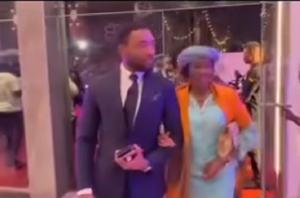Opinions of Sunday, 30 July 2023
Columnist: Prof. Raphael Nyarkotey Obu, Daniel Sackey
Can emojis represent a breach of promise to marry, sexual harassment in court?
Emojis were created by Japanese artist Shigetaka Kurita in 1999 and then hailed as a “new-era hieroglyphic language”, wrote Chinese researchers Jiamin Pei and Le Cheng in a Nature article in 2022. The word emoji is made up of two Japanese words e (“picture”) and moji (“character”).
It will not be surprising in Ghana and the Gambia when people begin to institute actions of breach of promise to marry, breach of contract, defamation, negligence, etcetera as a result of the wrong use of social medial emojis- it is so imminent. In this article, we examine whether emojis could represent or form the basis of a breach of Promise to Marry, sexual harassment in court.
The case for analysis
The case involved South West Terminal Ltd v Achter Land & Cattle [2023] SKKB 116
has to do with an action for breach of contract where South West Terminal (SWT)
purchased flax from Achter Land & Cattle (Achter), with delivery expected by the end of November 2021.
However, the flax was never delivered, and the supplier Achter argued that the use of a thumbs-up emoji could not convey an acceptance of contractual
terms, and therefore there was no legally binding agreement for the supply.
Two main questions before the court
The Court was confronted with whether there was 'consensus ad idem'('a meeting of the minds') or an intention to create legal relations between the parties resulting in a validly formed contract with thump-up emojis.
Court ruling and reasoning
The Court ruled that the thump-up emoji was effective to convey acceptance of the contractual terms and that a valid contract had been formed. Achter was ordered to pay damages for $82,000 (CAD) for failing to deliver the flax (this amount being the difference in pricing between the contract in dispute and the cost of the replacement supply).
The court further reasoned that: in the circumstances, emoji was “an action in electronic form” that includes touching or clicking on an appropriately designated icon or place on a computer screen or otherwise communicating electronically in a manner that is intended to express the offer used to allow to express acceptance as permitted under local law;
a the contract could have alternatively been executed in hard copy does not detract from the fact that there are a number of options to execute a contract, nor should it lead to the conclusion that using an electronic option is invalid;
the use of the thumbs-up emoji was analogous to the formerly sent short-form texts confirming agreement ('looks good', 'ok' and 'yup') and was the customary method by which the parties conducted their commercial relationship; and The defendant had accepted the contract and "just like he had done before except
this time he used a emoji" and the contract was validly formed due to the
existence of consensus ad idem.
In the same vein, an Israeli court has recently determined that an emoji can illustrate legal intent. It ordered damages to a landlord who claimed he replied to his detriment when he received a text with positive emojis and took down the ad for the property.
The defense
The defendant reasoned that one needs an actual signature to confirm the person’s identity and that it conveys a message of acceptance. The Court did not deny this and said that was the traditional position but found that itself does not prevent the use of an emoji such as a thumbs up.
The court reasoned that the authenticity of the text messages and identity of users were not an issue in the case as it was agreed that the cell phones used during communications were unique to the key individuals representing each of the parties.
However, the defendant argued on the grounds of a public policy and drew the court's attention that allowing a thumbs up emoji to signify identity and acceptance would open up the floodgates to allow all sorts of cases coming forward asking for interpretations as to
what various emojis mean (e.g. what does a emoji or an emoji mean?) which
would lead to the Court being flooded with disputes.
The Court acknowledged the defendant’s concern but said this case was novel (at least in Saskatchewan), however, the Court said it could not (nor should it) attempt to stem the tide of technology and common usage by denying the meaning of the emoji in communications.
Judicial notice on emojis and contracts
Common law courts have always applied a wide range of analysis to determine
contractual issues such as whether a certain type of signature is sufficient or whether parties agreed to be bound. In many instances, courts have regarded several deviations from “wet ink” signatures, including simple modifications such as crosses, initials, pseudonyms, printed names, and rubber stamps, to then considering scanned signatures and electronic or artificially generated signatures.
Also, Courts have taken judicial notice of many forms of documents used to bind
parties, from deeds and vellum to contract paper to emails "in writing". Agreements by a seal, signing, handshake or orally made, acceptance by email, click through online terms, clicking on the “I agree" icon, or pressing a computer screen at an appropriately designed icon as constituting consent, agreement, or an electronic signature.
Emojis in relationships, flitting
There are instances where emojis could also land you into trouble for sexual
harassment and breach of contract to marry. With breach of contract to marry, the court position is clear that when you are in a relationship, and promise to marry someone, the emojis you have sent could be the evidence. For instance, the lady texted “ Will you marry me”? and you reply, it means to consent, yes or agreed.
Also, there are several emojis for flitting during chatting. One should be careful with how to use these emojis. For instance, the (tongue) emoji is also a sexual innuendo. It could be used as evidence of sexual harassment in the future.
In Bellue v. East Baton Rouge Sheriff NO.: 3:17-CV-00576-BAJ-RLB (M.D. La. Apr. 8, 2019), an employee sued her employer for sexual harassment after a colleague sent her a message commenting on her good looks, followed by a winking emoji.
In this case, the court reasoned that message could be regarded as “insensitive and uncouth,” and it is in material to be regarded as harassment. Though, the court reasoned that the emojis weren’t considered harassment, in case they did, the court regard them as material and thus constitute sexual harassment.
Take home
From the reasoning, of any contractual breaches using social medial and where thumb- up emojis are involved, there is a recent decision from the Canadian court that a thumbs-up emoji is a legally valid acceptance to form a contract. Thus we should be mindful of what we say or use via social media.
Also with regards to sexual harassment, one can be held liable for emoji sexual
harassment conducted through direct messages on Twitter, chats, texts, or the
notorious Facebook “others” inbox. For instance, texting eggplants and winky faces might land you in trouble at work.
Emojis appear to be the new reality in our society and courts will have to be ready to meet the new challenges that may arise from the use of emojis and the like.













